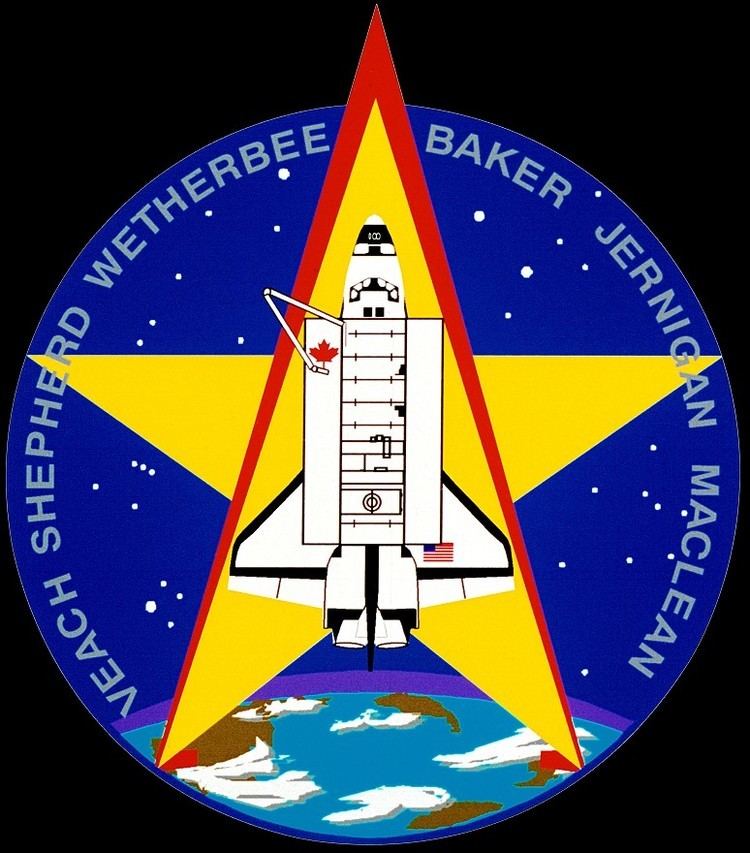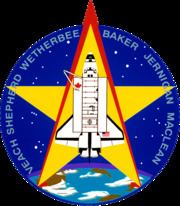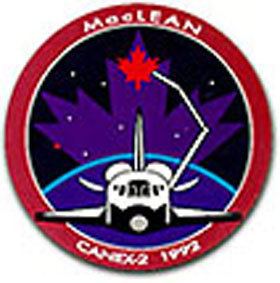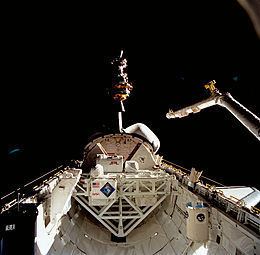COSPAR ID 1992-070A Orbits completed 159 Apogee 307,000 m Launch date 22 October 1992 | SATCAT no. 22194 Period 1.5 hours Dates 22 Oct 1992 – 1 Nov 1992 Landing date 1 November 1992 | |
 | ||
Mission type Microgravity researchSatellite deployment Mission duration 9 days, 20 hours, 56 minutes, 13 seconds Distance travelled 6,645,026 kilometers (4,129,028 mi) | ||
STS-52 was a Space Transportation System (NASA Space Shuttle) mission using orbiter Columbia, and was launched on 22 October 1992.

Mission highlights

Primary mission objectives were deployment of the Laser Geodynamics Satellite II (LAGEOS-II) and operation of the U.S. Microgravity Payload-1 (USMP-1). LAGEOS-II, a joint effort between NASA and the Italian Space Agency (ASI), was deployed on day 2 and boosted into an initial elliptical orbit by ASI's Italian Research Interim Stage (IRIS). The spacecraft's apogee kick motor later circularized LAGEOS orbit at its operational altitude of 3,666 miles. The USMP-1, activated on day one, included three experiments mounted on two connected Mission Peculiar Equipment Support Structures (MPESS) mounted in the orbiter's cargo bay. USMP-1 experiments were: Lambda Point Experiment; Matériel Pour L'Etude Des Phénomènes Intéressant La Solidification Sur Et En Orbite (MEPHISTO), sponsored by the French agency Centre National d'Études Spatiales; and Space Acceleration Measurement System (SAMS).

Secondary payloads: (1) Canadian experiment, CANEX-2, located in both the orbiter's cargo bay and middeck and which consisted of Space Vision System (SVS); Materials Exposure in Low-Earth Orbit (MELEO); Queen's University Experiment in Liquid-Metal Diffusion (QUELD); Phase Partitioning in Liquids (PARLIQ); Sun Photospectrometre Earth Atmosphere Measurement-2 (SPEAM-2); Orbiter Glow-2 (OGLOW-2); and Space Adaptation Tests and Observations (SATO). A small, specially marked satellite, the Canadian Target Assembly, was deployed on day nine, to support SVS experiments. (2) ASP, featuring three independent sensors mounted on a Hitchhiker plate in the cargo bay - Modular Star Sensor (MOSS), Yaw Earth Sensor (YES) and Low Altitude Conical Earth Sensor (LACES), all provided by the European Space Agency.

Other middeck payloads: Commercial Materials Dispersion Apparatus Instrument Technology Associates Experiments; Commercial Protein Crystal Growth experiment; Chemical Vapor Transport Experiment; Heat Pipe Performance Experiment; Physiological Systems Experiment (involving 12 rodents); and Shuttle Plume Impingement Experiment. The orbiter also was used as a reference point for calibrating an Ultraviolet Plume Instrument on an orbiting Strategic Defense Initiative Organization satellite.

The Tank Pressure Control Experiment/Thermal Phenomena (TPCE/TP) was contained in a Getaway Special (GAS) canister in the orbiter's cargo bay.
Some of the ashes of Star Trek creator Gene Roddenberry were also carried aboard the orbiter for the duration of the mission.
